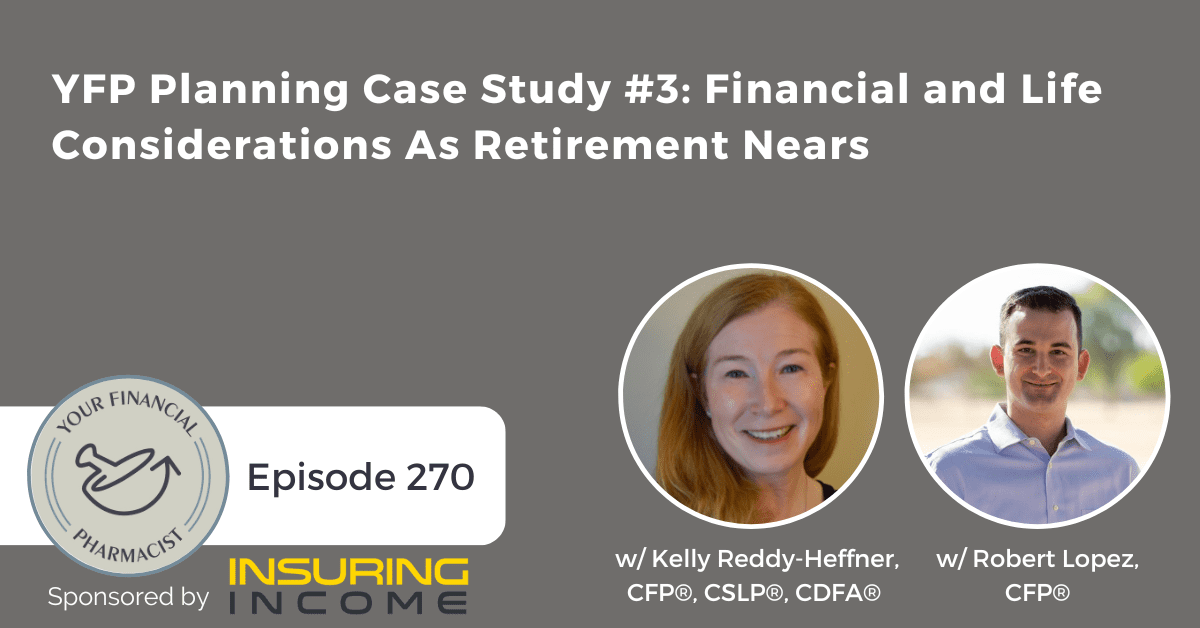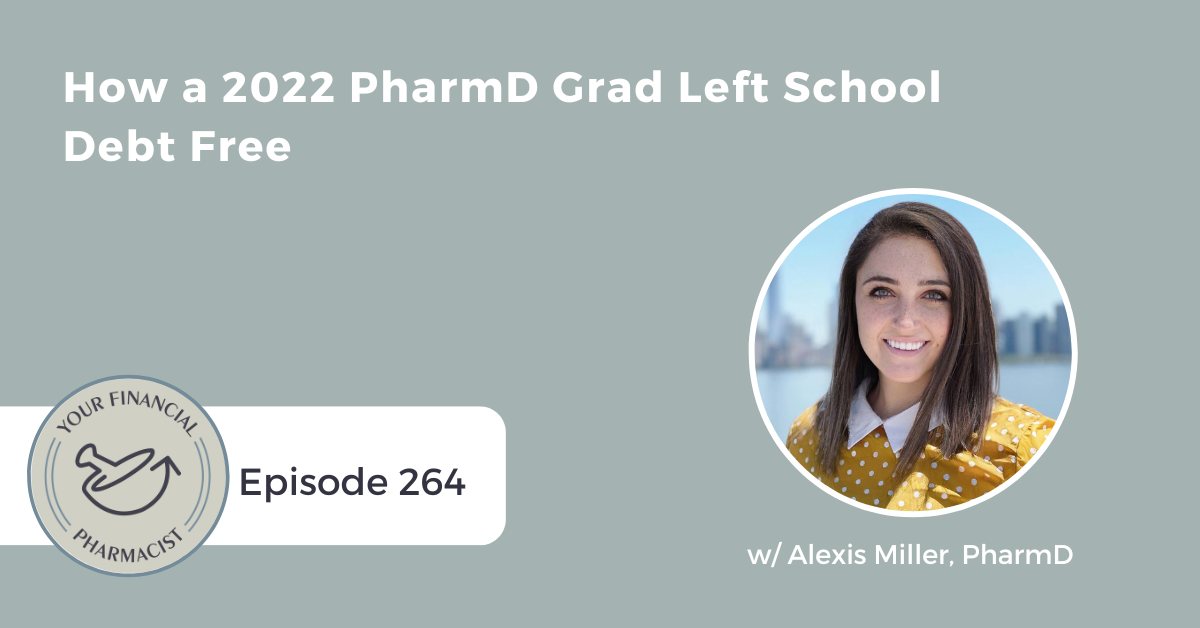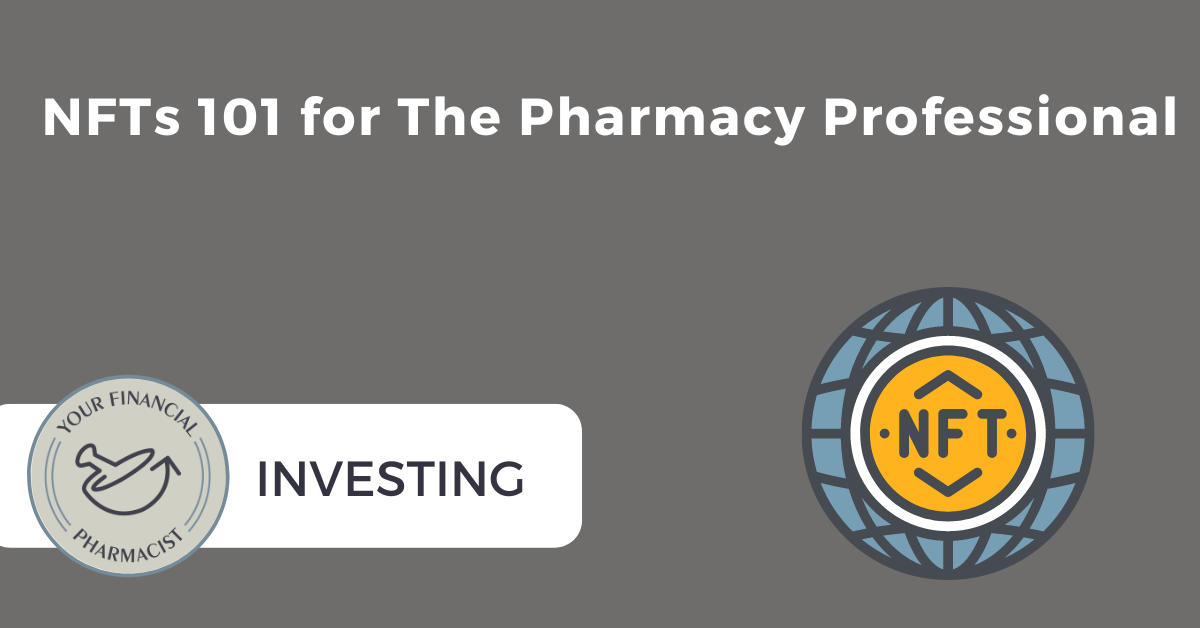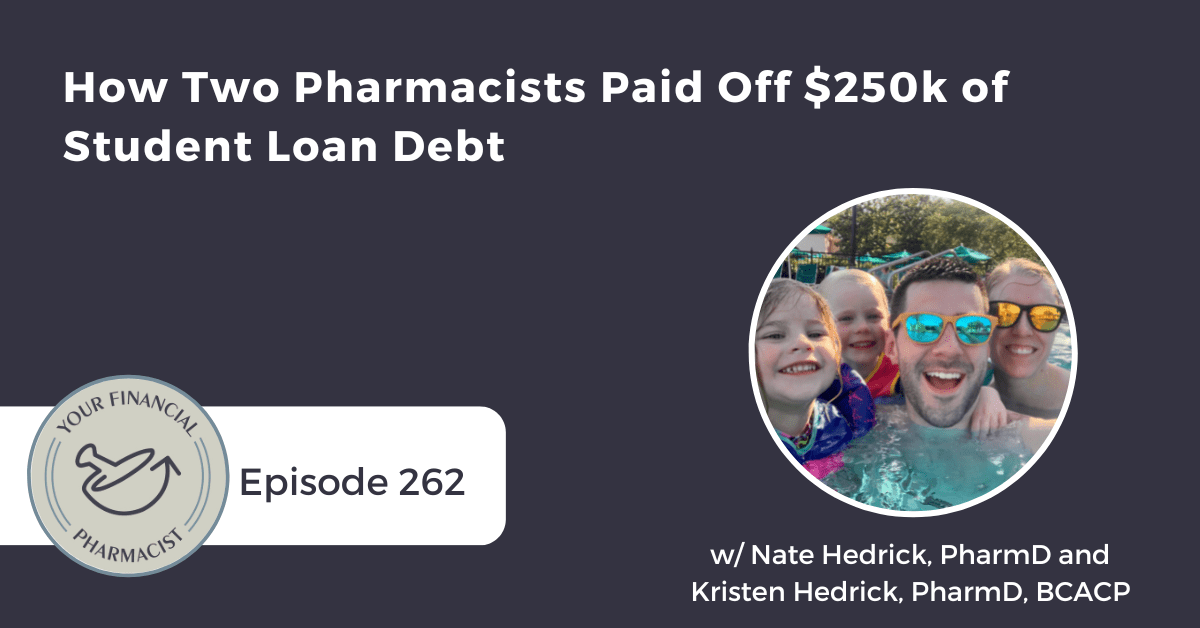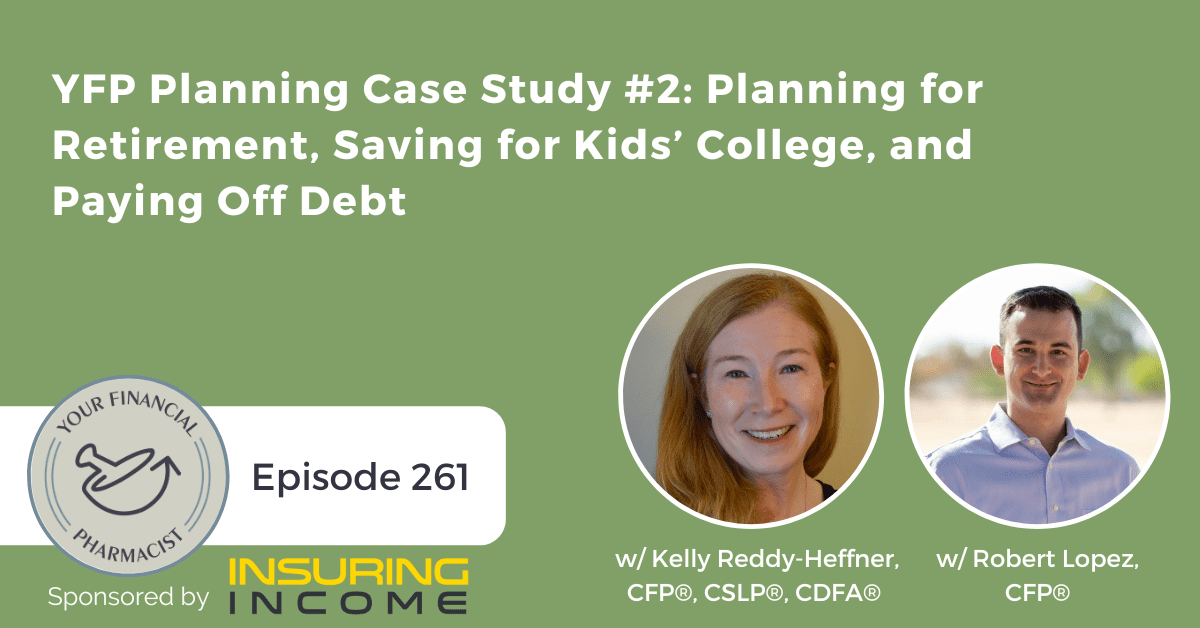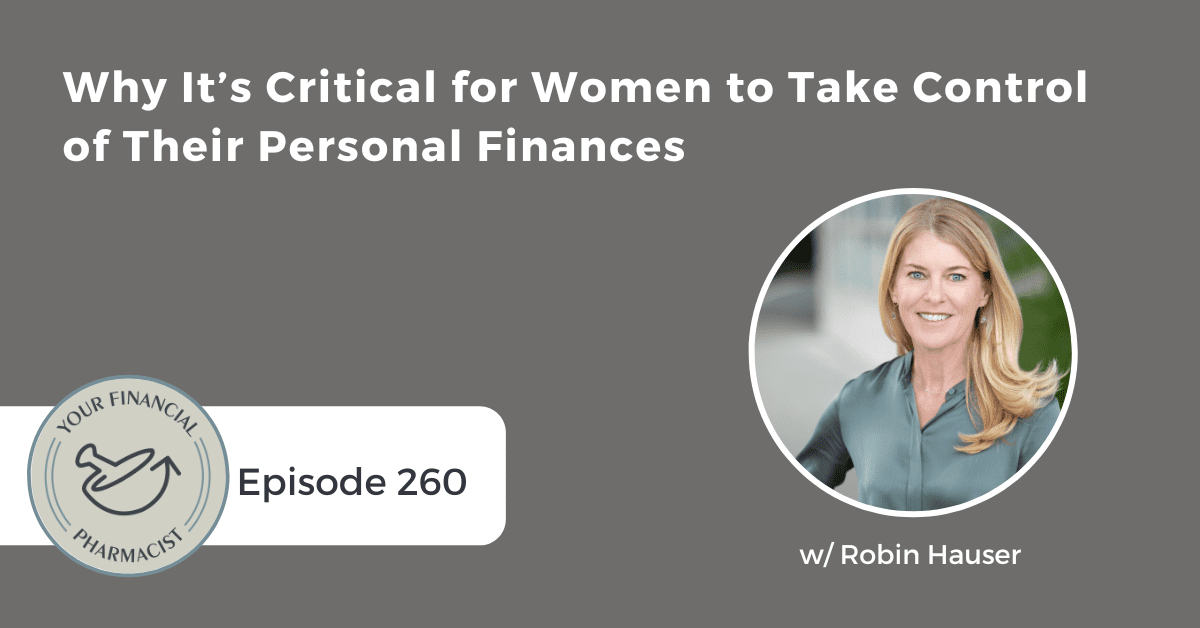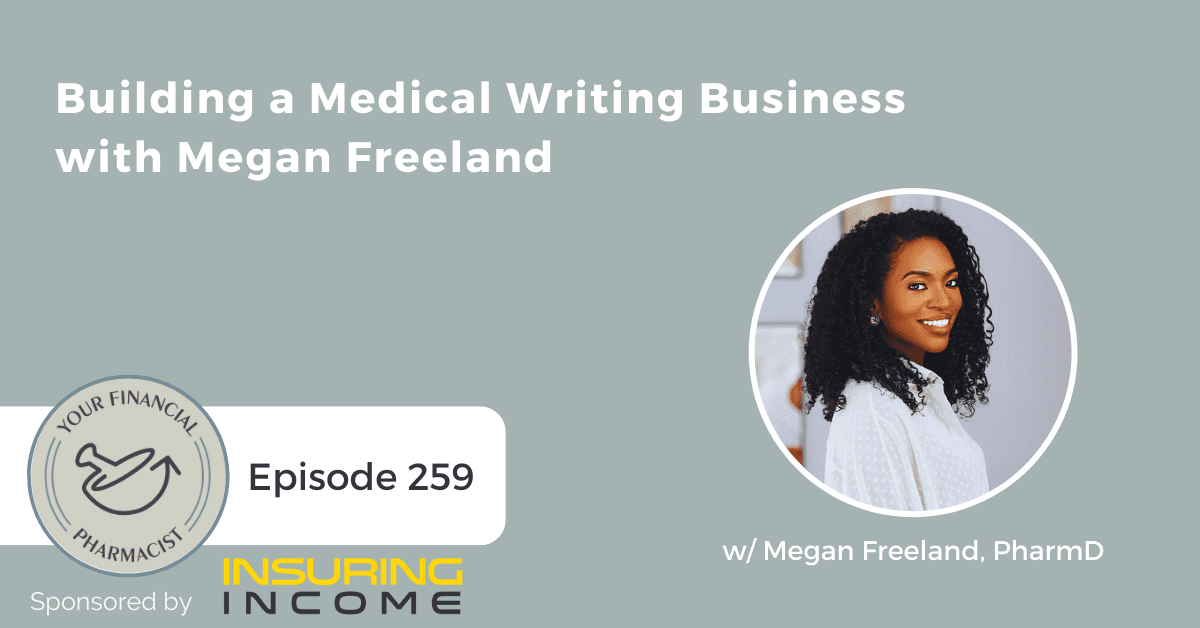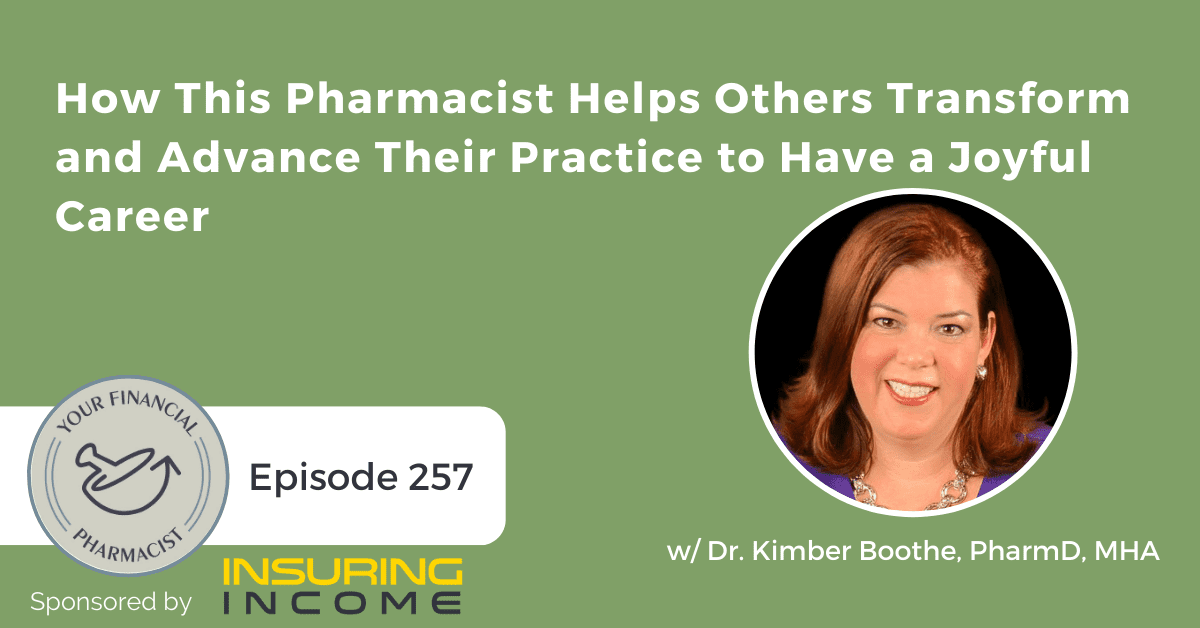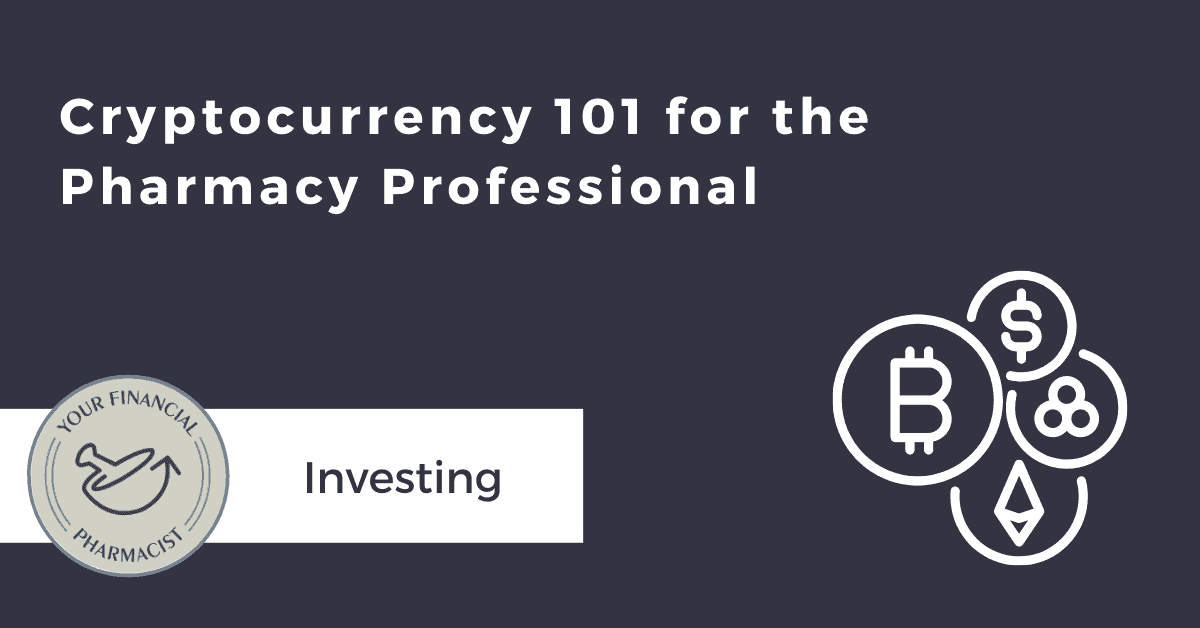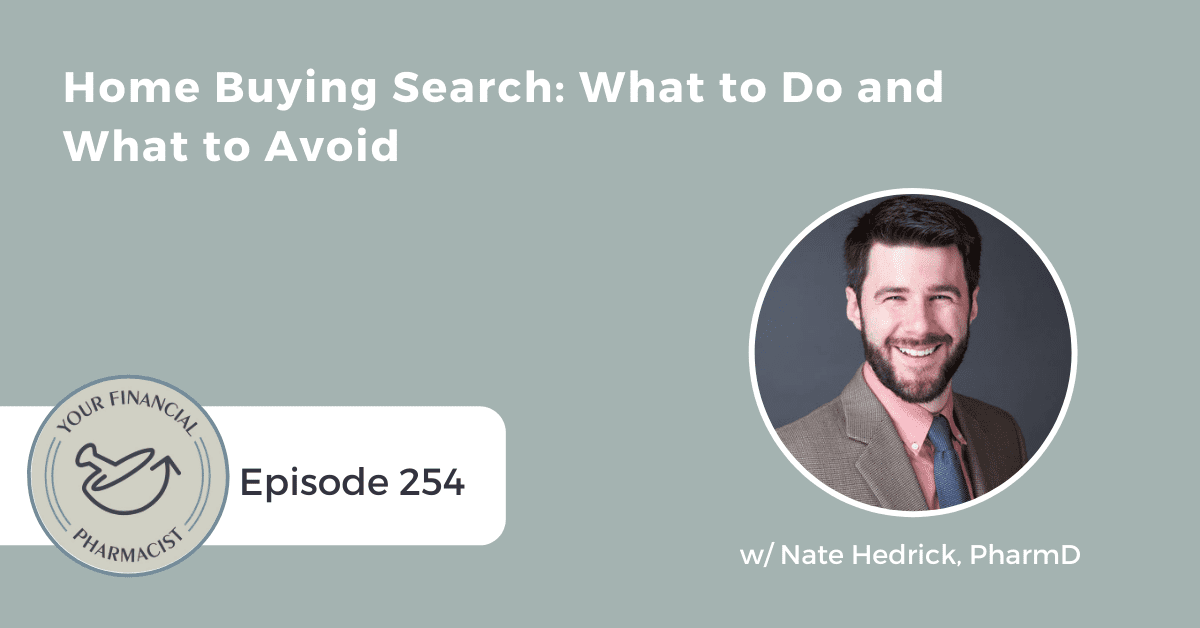YFP Planning Case Study #3: Financial and Life Considerations As Retirement Nears
On this episode, sponsored by Insuring Income, YFP Co-Founder & Director of Financial Planning, Tim Baker, CFP®, RLP® is joined by YFP Planning Lead Planners, Kelly Reddy-Heffner, CFP®, CSLP®, CDFA®, and Robert Lopez, CFP® to discuss a financial planning case study on financial and life considerations as retirement nears.
About Today’s Guests
Kelly Reddy-Heffner, CFP®, CSLP®, CDFA®
Kelly Reddy-Heffner, CFP®, CSLP®, CDFA® is a Lead Planner at YFP Planning. She enjoys time with her husband and two sons, riding her bike, running, and keeping after her pup ‘Fred Rogers.’ Kelly loves to cheer on her favorite team, plan travel, and ironically loves great food but does not enjoy cooking at all. She volunteers in her community as part of the Chambersburg Rotary. Kelly believes that there are no quick fixes to financial confidence, and no guarantees on investment returns, but there is value in seeking trusted advice to get where you want to go. Kelly’s mission is to help clients go confidently toward their happy place.
Robert Lopez, CFP®
Robert Lopez, CFP®, is a Lead Planner at YFP Planning. Along with his team members, Kimberly Bolton, CFP®, and Savannah Nichols, he helps YFP Planning clients on their financial journey to live their best lives. To go along with his CFP® designation, Robert has a B.S. in Finance and an M.S. in Family Financial Planning. Prior to his career in financial planning, Robert worked as an Explosive Ordnance Disposal Technician in the United States Air Force. Although no longer on active duty, he still participates as a member of the Air Force Reserves. When not working, Robert enjoys being outdoors, playing co-ed volleyball and kickball, catching a game of ultimate frisbee, or hiking with his wife Shirley, young son Spencer, and their dogs, Meeko and Willow.
Episode Summary
In this week’s episode, YFP Co-Founder & Director of Financial Planning, Tim Baker, CFP®, RLP® is joined by YFP Planning Lead Planners, Kelly Reddy-Heffner, CFP®, CSLP®, CDFA® and Robert Lopez, CFP® to walk through this financial planning case study featuring fictitious clients, The Kims, and their financial and life considerations as retirement nears. In this case study, Tim, Kelly, and Robert discuss Andrew and Courtney Kim and their current financial situation as they prepare for retirement in the next three to five years. As members of the “sandwich generation,” the Kims, in their early 60s, have concerns about caring for Andrew’s elderly mother and their adult son, in addition to a long list of financial goals, including saving for their grandchildren’s education. The team discusses how to best approach retirement by evaluating their investments, social security claiming strategies, and the budget to build their retirement paycheck. Robert shares insight on having open discussions with key players when planning for retirement and how Andrew’s mother and their adult son can factor into the timing and budget associated with their retirement. Kelly tackles some challenging questions surrounding long-term care insurance and whether or not having a policy will be a solid financial decision.
Links Mentioned in Today’s Episode
- Insuring Income: Get Quotes and Apply for Term Life and Disability Insurance
- YFP Planning: Financial Planning for Pharmacists
- Schedule a Free Discovery Call with YFP Planning
- Case Study #3 Summary Sheet
- Forbes: The Value of Sound Financial Decisions: From Alpha to Gamma
- Genworth: Cost of Care Trends and Insights
- Your Financial Pharmacist Disclaimer and Disclosures
Episode Transcript
[INTRODUCTION]
[00:00:00] TB: You’re listening to the Your Financial Pharmacist Podcast, a show all about inspiring you, the pharmacy professional on your path towards achieving financial freedom. Hi, I’m Tim Baker and today, I chat with YFP Planning Lead Planners, Kelly Reddy-Heffner and Robert Lopez, to walk through our third case study of a fictitious family, the Kims. The Kims are in their early 60s and are very interested in how to best approach retirement in the next three to five years.
We break down how to best approach retirement question by evaluating their investments, discussing social security’s claiming strategies and looking at their budget in order to approach building their retirement paycheck. We also discuss other issues such as caring for an adult child and an aging parent, and some questions around long-term care insurance. I hope you enjoy this episode. First, let’s hear from our sponsor, and then we’ll jump into the show.
[SPONSOR MESSAGE]
[00:00:50] ANNOUNCER: This week’s podcast episode is brought to you by Insuring Income. Insuring Income is your source for all things term, life insurance and own occupation disability insurance. Insuring Income has a relationship with America’s top-rated term life insurance and disability insurance companies, so pharmacists like you can easily find the best solutions for your personal situation.
To better serve you, Insuring Income reviews all applicable carriers in the marketplace for your desired coverage; supports clients in all 50 states and makes sure all of your questions get answered. To get quotes and apply for term life, or disability insurance, see sample contract from disability carriers, or learn more about these topics, visit insuringincome.com/yourfinancialpharmacist. Again, that’s insuringincome.com/yourfinancialpharmacist.
[EPISODE]
[00:01:41] TB: What’s up, everybody? Welcome back to our case study series. I’m here with Robert Lopez and Kelly Reddy-Heffner. We’re going to be talking about the Kims today. Now in the previous two case studies that we’ve had, we’ve talked about different stages of life, whether it’s a newer pharmacist, a pharmacist that has a younger family that’s trying to work through different issues with college funding.
Today, the Kims, they’re going to be more closer to those years of approaching retirement and really asking those questions about hey, do we have enough? Can we start winding our careers down and look at retirement and more seriously? Robert, Kelly, welcome back to this third installment of the case studies. How’s everything going?
[00:02:25] KRH: Going pretty well. How are you doing, Tim? Welcome back from your –
[00:02:27] TB: Awesome.
[00:02:28] KRH: – sabbatical.
[00:02:29] TB: Yeah, appreciate it. I’m back, energized. I enjoyed the time off. I’m happy to be back. Shaved my head, so I’m in this weird period of, should I shave it again, or not? Yeah, doing fun. How about Robert? How’s everything going with you?
[00:02:42] RL: It’s going pretty good over here. Football season is upon us, so it’s the good time of year.
[00:02:46] TB: Yeah, go Birds. Excited for that. I told my wife, Shay, that we’re back to that time, where Saturdays and Sundays are going to be a little rough in terms of getting anything done. Yeah, I’m excited for football season. It’s actually starting to cool down over the weekend here. We’re in these knees, highs of 70s. Yeah, fall is coming.
Yeah. So let’s jump into it guys. As you guys can see, if you’re watching on YouTube, we share the case study, the fact pattern. Robert is going to kick us off and go through who we’re talking about today. Kelly’s going to go through the goals and some of the debt and I’ll set up the rest of it. We’ll put in protection, some of the tech stuff and some of the facts of the case. Go ahead, Robert. Kick us off here.
[00:03:30] RL: Yeah. Today, we’re going to go over Andrew and Courtney Kim, who are 62 and 60, respectively. Andrew is an operations manager for a defense contractor. He makes $205,000 per year. Courtney is infectious disease pharmacist working for the VA. She makes a $150,000 a year. They file their taxes, married filing jointly. They have two sons, Peter and Logan. Peter is a software engineer, 32, married, two kids, living in San Francisco. Logan actually is living back at the house. He’s 30-years-old, but he recently lost his job and is staying with parents for now. They live in Portland, Oregon. They have a combined gross income of $355,000, which breaks down monthly to $29,583. Their net, which is after taxes and contributions to retirement plans and insurance is $11,795.
They have expenses that break down as $3,500 for fixed expenses, $2,600 for variable expenses, and about $5,600 going to savings, which is better than the 50-30-20 that we aim for, and it’s closer to a 30-22-47. They live in a four-bedroom single-family house they purchased back in ’86 for a $105,000, which is where it’s worth well more now. Is completely paid off. Andrew’s mother who’s 82 lives about an hour away, but that may be changing in the near future based on her health concerns.
[00:04:50] KRH: Of course, as they approach this next transition phase, thinking through some of their goals, so they both are interested in retiring in the next three to five years. Hey want to make sure that they have enough and also, see what their Social Security benefit will be as part of that retirement nest egg and what they have available. Thinking about downsizing. That’s a common conversation. Also, with Logan back in the house and not sure about where mom may need to be residing and what assistance she will need, that’s a consideration. They also have another son and grandchildren in California. Want to make sure insurance is squared away. There may be a time with a gap in health insurance. Understanding what that means before they can be on Medicare.
They want to focus on some more leisure and do the traveling, see the people, do the national parks. Then, they also want to make sure that they can take care of mom and that their children are in okay shape as well, and maybe save some money for the grandchildren’s education in the future. As we start looking at strategy, they also have some debt. They do not have mortgage debt, so that has been paid off in the last year as Robert mentioned. They do have a car note, the very fun Tesla, which has balance.
[00:06:15] RL: You know a little bit about that. Yeah.
[00:06:17] KRH: I do know a little bit about that. Yeah. That apparently, pre-retirement, you need to get the fun car and then have to take care of it. 35,000 left on that car note at 4.5% interest. Then, they took out some private loans for Logan’s education, currently at a 6.75% interest rate with four years left, and that balance is about $24,000.
[00:06:42] RL: Yeah. As we look at the wealth building stuff and be jumping back and forth between this and the net worth statement. Their cash in checking and savings is right about a $100,000, which is they’re probably a little bit over funded there, given the expenses that Robert laid that in 401k that he has with his defense contractor job, he’s putting in 13.2%, which is about $27,000, which is what he can put in $20,500. Then after age 50, you can put the extra 65 in it, $6,500 there. $27,000 is what he’s putting in, plus a 6% match that he gets from his employer. It’s right now invested in target date funds for 2035.
Courtney has a TSP from the VA. She’s has in the middle of the VA long, where we received in the last couple of years. Her pension stuff can probably be similar to what we see with a lot of our clients with regard to that. She’s putting in 18%, which is $27,000. Plus, she gets a 5% match. She’s in basically, 50% CE fund, and 50% iFund, so all equity. Common stock and international companies. She has an old 401k that she hasn’t looked at for a while that has about $165,000 that we have to figure out what to do with that.
Taxable account, joint taxable account has about a $135,000 that they’re putting in $500 a month. It’s currently with an advisor that they speak with infrequently. Mostly C-class mutual funds in an 80$-20% mix. Probably some expense there that we’re not seeing that might be eroding some of the gains. A joint savings account, like I said, that they’re putting $600. This was the $600 a month. This was the mortgage payment, minus some property taxes. IRA is hanging out there, Roth IRAs, 35,000 for Courtney, 85,000 for Andrew that’s managed by that advisor, all equity institutional funds. Probably being charge a fee on that.
All in all, between cash and the investments, and then the value of the house, about 2 million dollars in assets. 2.1 million dollars in assets, so it gives them a total – if you subtract about the $60,000 in liabilities, about 2.036 in net worth million. 2.03 6 million in net worth. In terms of the wealth protection, they both have a term policy use, $500,000, some group life insurance from their employers, both set to expire. They’re their own policies in three years, so at 65 for Andrew and 63 for Courtney. They have some short-term and long-term disability, own occupation through their employers.
Courtney carries a professional liability coverage. Then from the state perspective, they have a will, but it hasn’t been updated in a long time, 20 years. Living well and power of attorneys also need to be updated. There’s some concern about Andrew, mom, if she has the right documents and how that’s going to affect their financial plan. Taxes, they’re doing it themselves right now through TurboTax, concerned about gains on the house if it’s sold. They would like to pay a lot less property tax in the future, which is also one of the reasons that they’re looking to downsize. Concerned about taxes when they take money out of their traditional investment accounts. Just how to best spend down those accounts without being killed in taxes.
Some miscellaneous stuff. They’re both in good health. Andrew thinks that they should take security ASAP, because he doesn’t want to lose out. There’s this idea that I want to get everything, every nickel that I put back in, so it’s definitely a point of conversation that we need to have. Not sure if they should move out of the state, or to a retirement community. Obviously, with the concerns with Andrew’s mother close by, and then should they go to a different state with family in California? Should they phase into retirement? Tougher with the VA, but Andrew could consult, be a contractor with his employer. Then Courtney is very worried about running out of money. “We’d rather be safe than sorry. I would rather work two more years if needed to retire to make sure that the money doesn’t run out.”
That is the facts of the case here, guys. I guess, if we look at goal number one, they want to retire in the next three to five years. If the Kims were our clients, what is the best way? Kelly, I’ll start with you. What is the best way to start breaking down that question of, hey, are we on track to be able to retire comfortably and have the money last in the next three to five years?
[00:10:52] KRH: Usually, what we would do is start with a nest egg, just taking a quick look at what assets they have available, time interval for when they want to retire. You can get a Social Security statement from the Social Security website. It would be good for them to download that data, so that we can see what their monthly and annual amounts will be. There are differences in that amount, based on the timeframe when they take the Social Security. There’s a difference between taking it early, taking it out for retirement age.
I’m guessing with their age range, it’s 67 and some change would be for retirement age. There’s also estimates at age 70. Sometimes age 70 can be a lot more advantageous than even full retirement age. It’s good to run the numbers and take a look. The nest egg gives a good high-level, like, how do things look in terms of being prepared for retirement? Then we also use software with e-money to take a look at a little bit more granular detail spending data. That was one of the things that we had talked about previously in preparing for this is, if they spend a little bit less in retirement, make some changes, it really will have a big impact on overall what they can do. E-money allows us to model different spending scenarios and take a look at what the cashflow is.
[00:12:23] TB: Yeah. I think, the big thing is it’s obviously looking at what they have, their investments, but then also, what is the potential drawdown rate, or withdrawal rate? A lot of people are familiar with the 4% rule, which is a general rule of thumb that if you have a million-dollar portfolio, and you basically take 4% out every year, $40,000, a lot of the math says that that can support 30 years of living off of that. There’s a lot of different ways to do it.
I think, let’s talk a little bit more about the Social Security statement. You mentioned that and I think that’s one of the things that we see that can often be influenced by what you read in the news, what your maybe colleagues have done. Like, they go to retire. Robert, how do you approach the conversation of when, because a lot of the times, a client already has their mind made up about Social Security.
It’s interesting, Morningstar did a study. They said that and a good advisor can basically add something like 30% more to your income in retirement. 9% of that, the biggest chunk of that is proper social security claiming strategies. How would you broach that subject with a client, particularly if they have their mind made up, in this case, Andrew, is saying, “Hey, we need to claim as soon as possible.” Walk me through your approach with that.
[00:13:46] RL: I think, one of the biggest things that you can do for a client is really just showing them all the data. That Social Security statement that you can pull from ssa.gov that Kelly mentioned, really has all that laid out. Now, when we look at Andrew and Courtney here, they look like they’ve probably been maxing out Social Security. Meaning, they’re putting in the most amount that they can per year. In 2022, if he draws now, if you were to retire today and draw, maximum withdrawal at 62 is $2,364 a month. If you were to wait until age 70, that draw would increase to $4,194 a month.
Really showing that differentiator there of this is 1,800 additional dollars per month that you would get by waiting. Then, if he just waits until full retirement, age to 67, then that is $3,345. Nice, in the middle of difference. Really showing them how that would work. Now, for their case, specifically, if they already have their minds made up and say, “Hey, I want to do this.” He says, “Hey, I want to retire in three to five years. I want to draw as early as I can.” Well, just as early as I can mean he wants to draw today and continue working? Because then, we can show the tax consequences of those dollars. How much tax are we going to be paying on the Social Security dollars if he’s continuing to work?
If he’s not going to continue to work and we’re going to wait, say three years and draw at 65, which is still before his defined for retirement age, then we’re not going to be taxed on the majority that that amount as long as she’s not working either. We can show, does this math work, right? Their expenses are not as high as they may believe that they are, because they’re saving a lot of money. If we double up both their Social Security at age 65, maybe she worked for two years longer than he does, so they’re both retire at 65. That solves both of them.
He wants to draw as soon as possible. She wants to maybe work a few extra years to make sure that they get the value, then their social security draw would be the same, but you would need to understand that if something were to happen, they lose one of those securities, right? It’s not that you would get the other person’s. If we were to wait, and we can show this benefit of it for Andrew, we say, wait until age 70 and we’re getting that $4,194, if he were to pass away, then Courtney would take over his larger payment.
[00:15:47] TB: Correct. Yup.
[00:15:48] RL: That’s generally an argument that we can make is whoever was the highest earner, we want to wait the longest amount of time, so that we can get the benefit of those multipliers on the years after full retirement age. The highest amount would be age 70 at this point in time.
[00:16:01] TB: One of the biggest things that we’re trying to solve in retirement is making sure that the money doesn’t run out for the amount of years that we’re going to be alive, which we just don’t know what that is. It’s an educated guess. I think, one of the things that a lot of people and Andrew is showing this like, the sooner the better, because that’s when I get the paycheck. For someone like him who’s the higher earner in the fact pattern, he’s right now making $205,000, Courtney’s making a $150,000 as the infectious disease pharmacist, his Social Security is probably going to be higher at a baseline. It might make sense, although he might be the first to pass away.
I think, probably some questions about Andrew’s mother is alive. She’s 82. Some history of the family, when did Andrew’s father passed away might play a part in this. To your point, when one of the spouses pass away, you basically have the choice. You can either take Andrew, which is probably going to be higher. Or if it does, in fact, be the case that Courtney should just keep hers. At the same breath, you’re still losing the stream of income that you didn’t have. Most of the time, a lot of the time, your expenses don’t basically get chopped in half when the other person’s no longer living. You still have all those fixed expenses, maybe food and things go down like that.
To really combat against this mortality risk of okay, how do we prevent money from not basically being completely spent down, Social Security is going to be one of the biggest attributes for that. With this particular type of client, it’s going to be a smaller percentage of the income, just because they make more money, and Social Security’s going to be capped at a certain amount of income. It’s really important to make a smart claim and decision with regard to the Social Security.
To your point, pulling the Social Security statement, I think, probably I would make sure that they both go through and look at their work years, and the earnings tax for Social Security, to make sure that that is accurate. Sometimes that can be inaccurate. Just seeing what their current benefit is at, it basically outlines from 62 to full retirement age, because they’re both born after 1960. It’s going to be, basically, 67 is full retirement age. Then how does that change by percentage if we can lock in income if we wait to age 70? Then, it shows that in the benefit calculator estimate.
Social Security website is actually pretty good, and be able to basically pull down those statements in real-time, I think is going to be solid. The way that social security is calculated is it takes your 35 most-highest paid years to make that calculation, which is another reason why potentially phasing into retirement, or delaying retirement is going to be a big tool to make sure that, because we might log another year where they’re earning six figures, which maybe they didn’t do that early in the career.
We look at the nest egg. We might look at some of the spending. Kelly, how do you approach looking at this? Because unfortunately, it comes back to the B word, which is budget. How do you actually walk clients through that and try to project what they actually will need from their retirement accounts? What does that look like in practice?
[00:19:18] KRH: I mean, that’s a great question. The nest egg does an estimator. Do 70, 80, 90, 100. In this case, seeing that their expenses were lower, the nest egg worked estimating lower expenses. I guess, from there, the question would be, if you estimated 50% of expenses for each side, I lean towards having the numbers in place, so that people can see, this is actually what this looks like. We do have a spending budget template and then we also can do things again in e-money, where there is an expense section where you can add in different anticipated expenses.
We see some go away. They’re not going to be making retirement contributions, if they’re fully retired. In this case study, it will be interesting and would be a conversation with the client. Although, I suspect that they would ask it back to us, to answer with Logan and mom, what can they afford to do? It is an interesting time period and not all that uncommon for kids to be in an age where they still need a little bit of assistance in trying to define what that is and what you can afford to do for them and with them. The circumstances, unfortunate with Logan, but I think it is worth having the conversation about. It is still a private student loan on the balance sheet. It is him in their household, what is he contributing? How long? Have they set some parameters for what they’re willing to do, and then us helping them figure out what they can possibly afford to do, if they are interested in downsizing, which is on that goal list.
Mom is a whole another host of questions. Understanding what resources she has available. Then trying to figure out what really they could afford to help her to do. I mean, I think the actual numbers are pretty helpful to see, especially when you do have other family members involved and really be as detailed as you can about what the budget might look like.
[00:21:35] TB: Yeah. I think, it’s one thing to fill out a spreadsheet, it’s like, okay, I think this is what we pay for food, or this is what we pay for utilities, or travel. Then, I think if you actually link it to credit cards and debit cards and savings accounts, checking accounts, typically, there’s a lot more there that we don’t necessarily account for. I think, probably it’s a good exercise to do both, and then compare. I think, there’s some planners out there that they’ll look at, hey, how much money came in for year 2021. They basically say, “This is what I need to plan.”
I almost build a paycheck with just the same thing in mind, even going into retirement. A lot of what we typically do with the nest egg, is we discount it by a certain amount, because we’re not going to be saving, in this case, 13% for Andrew for his 401k, and 18% for Courtney’s TSP. There’s a discount just in that alone. It comes back to that. It’s like, it’s the building block of how we need to be able to disperse. Once we made that decision with Social Security, what’s the gap?
Obviously, it’s going to be in phases. If they do retire at 65, maybe we draw down the investment portfolio a lot more aggressively, until we get to a delayed Social Security at 68, 69, even 70. Then that picks up and we let the investments take a little bit of a breather for that. In terms of this idea of sandwich, the sandwich generation. That’s where there’s a household that’s basically, they’re taking care of themselves, or trying to, but then they’re also taking care of a parent, and then an adult child. Tough conversations, guys. Robert how do you begin to have that in terms of like, “Hey, we need to take care of number one, which is you, versus, hey, I know, this is really important to you.” Because the other thing is they’re also talking about education for their grandkids. How do we begin to dissect that part of their financial plan?
[00:23:32] RL: I want to start off by saying, I’ve never heard the term ‘sandwich generation’. Since Kelly’s a member of that generation, I think it’s very interesting.
[00:23:40] KRH: I’m not 60 yet.
[00:23:44] RL: Generational. Generational. No, I think having that conversation with Logan is the most important part, right? We don’t know what he’s professionalized in this scenario. He says, he lost his job recently and had to move back in with mom and dad. Is he an engineer like his brother? Is he a developer? Is he a starving artist? What’s going on here? How does that really work out? Laying it out.
We can’t be the centers of the universe forever. They’re parents, so they want to take care of their kids. They want to help the generation after them, but they can’t take care of everybody all at once. Really coming to terms with that. Letting the kids know. Logan might be very open to understanding of, “Hey, mom and dad want to retire in the next year or two. We really need you to be on your own. Hey, grandma is not doing so well. She’s going to need your room, bud. You’re 30-years-old. It’s time for you to figure it out.” Really laying it out, I think would do well.
Then having that conversation with Peter as well. Peter may already have retirement – I’m sorry. Education savings for his kids set up. Those kids may have another set of grandparents that are also trying to set up accounts and everything. Again, they don’t have to be the center of the universe. They need to be center of their own world and make sure that they’re taking care of themselves, numero uno.
[00:24:53] TB: Yeah, they might be like, again, we’re not trying to solve everything right away. If this listed as the number five, the last goal, it might be that, let’s get the – let’s figure out the debt, which the debt isn’t bad. I think, there’s a question of, do we just take some of the cash that we have, the $100,000 between checking and savings and apply that to the $59,000 that we have between the Tesla and the private loans, and private loans between the six and three quarters, the Tesla being 4.50%. Clear the board there.
Then we start looking at as we get the expense information in a little bit better, if 65 is the goal, which is what I would be pushing for, because that’s when Medicare starts. There’s not necessarily a gap in that regard from a healthcare perspective. Maybe it’s like, your, your will is actually set to bequeath some of that money to grandkids. Obviously, there’s in Oregon, you can get some tax advantages if you’re putting money into a 529 today. It’s minimal. I think those things are possible, but I think we take it in bite sizes.
I agree with you. I think it’s like, had that discussion with Logan, have that discussion with mom and see where she’s at in terms of – because that’s, a lot of moms do not want to move back in. That can be a struggle, just to make sure that they’re getting care, but there can be that loss of independence if they’re now living with you, or if they have to go live in assisted living, or things like that.
I think, it’s level setting those expectations. Like what we always say, even with the education piece, you can’t take retirement loans. You can take student loans and other things, but eventually, someone like Logan has to figure it out and do their thing. That can be a very strong pull on the financials.
In terms of this idea of long-term care insurance. I guess, what’s your guys take on that, as they’re right in that age, where the challenge here is time in, if and when to actually purchase these policies. The sweet spot is usually 60 to 65. Some people say 50. The problem is, if you purchase that 50, you could be paying these premiums that go up regularly for 30, 40 years, before you even have the – you make a claim. I guess, what’s your guys’s takes on the long-term care insurance question that they have in terms of looking at policies and purchasing them for in the event that they need some assistance in that regard? Kelly, what do you think?
[00:27:24] KRH: This is a hard question, I think with the long-term care insurance, I’m going to be honest.
[00:27:28] TB: I agree.
[00:27:30] KRH: On the one hand, right, if you’re going to pay premiums for a long time, it may add up that you have paid more in premiums than what you’re going to get out of it. Care is expensive. It does involve a little bit of personality and understanding what people’s expectations are, too.
If you have someone who is like, “I am never leaving my house. I don’t want people in my house helping me.” I mean that personality would be hard to justify a long-term care policy, because they are going to be very resistant to using what you would get from it. But the care costs are expensive. At some point, that certainly should be a conversation piece, like how much could be anticipated in that cost, with all insurance products. It’s a tradeoff between paying a premium to have somebody else cover an amount that you cannot pay for out of pocket for a recovery that you would like to have in the event that something happens. Or you’re paying out of pocket. Like, you have enough resources to take care of the care that you have in your mind, that you want to have happen.
In the e-money data, we do usually build in two years at the end of assuming some type of substantial care is needed in those last two years. That data can help answer this question to see like, what would that cost be? It’ll project it out in future dollars and give a very realistic, like this could be what you would have to face. I mean, certainly things happen where care is needed ahead of those last two years. It can be a combination. Certainly, the quality of the long-term care product would be a big piece. Can you get in-home care as part of it, if that is what is desirable? There’s a lot of nuances.
The person that helps give some quotes for some of the life and disability. They do some of the long-term care insurance as well, so we sometimes will talk to them about some of these questions and see scenarios where it makes sense. Again, personality, cost, what’s the alternative if you don’t have it? Sometimes it’s a completely opposite, which is spending down and trying to figure out a strategy to not have so many sources.
[00:30:02] TB: Medicaid, right? Yeah.
[00:30:03] KRH: Right. Then are you okay with what that care looks like in your area where you might be receiving care? Those are all very difficult questions to answer. If the cash flow is good, and it makes sense to do it, and it’s affordable and you’re in that sweet spot. If you’re on the conservative side, you might lean towards doing it. If you like more risk, or more adverse to accepting care, it might not be as big of a priority.
[00:30:37] TB: When we talk about long-term care, that’s really – it’s insurance that provides assistance, usually through assisted living, a nursing home care, home health care. Sometimes personal, or adult day care for individuals, 65 or older that have a chronic or disabling. This is typically people that are having trouble using the bathroom, dressing themselves, feeding themselves, that type of thing. They did a study in 2020 that the average cost, the current medium annual costs for assisted living is $51,600. For an in-home health aide is 50, almost $55,000. For a private room in a nursing home, it’s a $106,000, which obviously, can be a pretty big chunk of that investment portfolio.
However, about 80% of long-term care is provided at home by unpaid family members. That’s where you might say, “Hey, Peter. What’s the plan for this?” I know conversations with my parents, they don’t want us to have to really have to deal with that. They rather have some care by something that they’re paying for. I think, it’s just family-to-family. A lot of a lot of families, you’re it, and that might be the case with Andrew and his mom is that it’s more of a self-insured type of thing.
As we know with most things, the price of this type of care is going up and as are the premiums for these type of policies. That’s the challenge. I know, some of the people that we wrote policies at my last firm is that they would buy these policies, and then a couple years later, the premiums would go up 10%, 20%, and they would let them last. I’m just going to go at it on my own. It’s really a personal decision in terms of what your strategy is, and how you want to attack it, but it’s definitely something that I think we as fiduciaries need to see what comes back from the client in terms of their approach. It’s a tough one. I’m with you. How about Robert, do you have anything to add to that?
[00:32:39] RL: No. I think you guys did a really good job on that one.
[00:32:42] TB: We talked about the insurance. Any other gaps and the protection? Obviously, I think one of the things, Robert, that we should be looking at is just the estate stuff, and making sure that that is all updated and good to go. Probably start to look at the mom stuff, too, right?
[00:32:57] RL: Definitely. Obviously, if you have an estate plan that was drawn up 20 years ago, there’s going to be some things that have shifted, or changed. In that meantime, your boys were 10 and 12. Best at that point, maybe you want one of them to be your power of attorney, or your health care proxy. Maybe you want a different family member to be that executor. Maybe you want to pass things along differently now that you have grandkids that you definitely didn’t even imagine at that point in time when your kids were in middle school.
Then definitely, mom, we really want to understand what mom has going on. Is she independently wealthy, and she’s never going to live with us by choice? Does she have a bunch of heirlooms that she wants to pass along? Does she have her wishes laid out in order? Or do you know them? Because Andrew is going to be in charge of those decision-making questions. When the doctors ask, what does she want in this situation? You’re going to have to know the answer or you’re going to have to have that document to provide.
Really having those conversations, or those legal discussions would be really valuable ahead of time. Most people, when we think about estate planning, it’s because we don’t want to become a burden to our family. We don’t want to be troublesome in that situation. We want to lay out as much as we can, beforehand. She may have all that flushed out in a folder ready to go. She may have none of those documents, hopes and dreams that she’s going to live to 200. It’s really important to understand where everyone lies on that and have really honest and open conversations.
[00:34:14] TB: Yeah, I agree. I think that’s probably a big risk that can be easily mitigated by just now with an attorney and writing those things out and just keeping it fresh in that regard. Probably, the only other thing that I would address, I think, there was concern about gains on the house that they sell that. I know a lot of that gain is going to be excluded, probably half a million, if they’re filing their taxes together. There might be some gain that they will have to realize and plan for. If they basically downsize to a property, they might be able to exclude some of that as well. I think, probably working with a tax person as they’re approaching retirement would be good.
I think, the only other big concern here guys that I have, would be just looking at the overall investment allocation. We’re saying that a lot of it’s an equity. There’s probably not a lot in bonds, 80-20 in the taxable account. They’re approaching the eye of the storm with regard to the – if they’re looking to retire in three to five years, really, that’s probably the one time in their entire investment lies, where they probably need to be as conservative as they will ever be. What we’re really trying to mitigate here is sequence of return risk. This is basically where the market corrects, or we’re in a recession, it goes down 20%, or 30%, and then your withdrawal and $40,000 out of that. That typically leads to unsustainable and rates of failure with regard to pulling money from the portfolio.
As you’re approaching that eye of the storm, so to speak, instead of having an 80-20 or 100-0, we really need to be closer to maybe a 60-40, 50-50 to make sure that we’re protecting the things that we’ve grew over the course of their career. Then as we come out of the eyes of the storm when they’re in their 70s, and so on, maybe we get a little bit more aggressive, because we have it figured out and we’re looking more towards making sure it’s long-term. There’s lots of different ways to look at that, whether it’s a systemic withdrawal, a function approach, or something similar to that.
That probably would be to look at the investments in totality and making sure that for these last couple years, we’re looking more from a safety perspective, versus let’s try to get the portfolio as big as we can.
Guys, I think that’s probably a pretty good place to start. I think, for this one, more questions than answers. I think that’s a good thing. I appreciate the look at this case study with the Kims and looking forward to next time.
[00:36:45] RL: Sounds good. Looking forward to it.
[END OF EPISODE]
[00:36:47] ANNOUNCER: Before we wrap up today’s show, let’s hear an important message from our sponsor, Insuring Income.
If you are in the market to add own occupation, disability insurance, term life insurance, or both, Insuring Income would love to be a resource. Insuring Income has relationships with all of the high-quality disability insurance and life insurance carriers you should be considering and can help you design coverage to best protect you and your family.
Head over to insuringincome.com/yourfinancialpharmacist, or click on the link in the show notes to request quotes, ask a question, or start down your own path of learning more about this necessary protection.
[DISCLAIMER]
[00:37:23] ANNOUNCER: As we conclude this week’s podcast, an important reminder that the content on this show is provided to you for informational purposes only and is not intended to provide and should not be relied on for investment or any other advice. Information in the podcast and corresponding material should not be construed as a solicitation or offer to buy or sell any investment or related financial products. We urge listeners to consult with a financial advisor with respect to any investment.
Furthermore, the information contained in our archived newsletters, blog posts and podcasts is not updated and may not be accurate at the time you listen to it on the podcast. Opinions and analyses expressed herein are solely those of Your Financial Pharmacists, unless otherwise noted, and constitute judgments as of the dates published. Such information may contain forward-looking statements, which are not intended to be guarantees of future events. Actual results could differ materially from those anticipated in the forward-looking statements.
For more information, please visit yourfinancialpharmacist.com/disclaimer. Thank you again for your support of the Your Financial Pharmacist Podcast. Have a great rest of your week.
[END]
Current Student Loan Refinance Offers
[wptb id="15454" not found ]Recent Posts
[pt_view id=”f651872qnv”]

